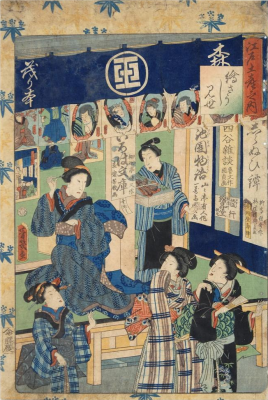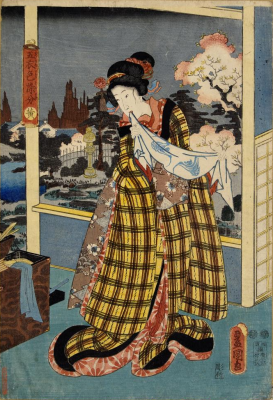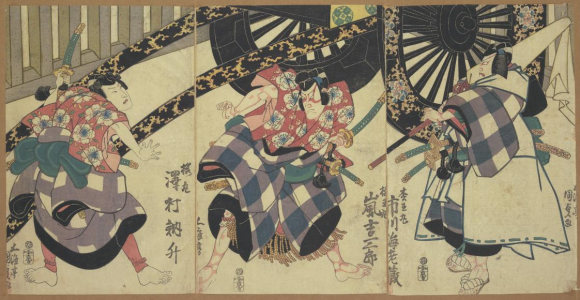Great-Edo Culture
Edo learning / Jihon and EzōshiNishiki-e: Edo's Information Media
Nishiki-e are color-printed ukiyo-e woodblock prints that became popular during the Meiwa era (1764-1772). Ukiyo-e woodblock prints were originally produced in monochrome using black ink, but gradually variations began to appear such as beni-e colored mainly with red ink, and urushi-e in which a lacquer-like gloss was applied over the ink. Later, benizuri-e or multi-color art prints using three or four different colors were developed, leading eventually to nishiki-e full-color prints that feature an extensive variety of seven, eight or even more colors.
(Edo Miyage no Uchi: Ezōshimise)
Painted by Ochiai Yoshiiku 1861 (Bunkyū 1)
(Itsutsuginuiro no Somewake: Ki)
Painted by Utagawa Kunisada I 1851 (Kaei 4)
They enjoyed extensive popularity, from the common people to daimyō (lords). As specialty products of Edo, they were also popular as souvenirs for taking other area. Nishiki-e of a variety of genres lined the shelves of jihon (storybooks and ukiyo-e woodblock prints published during the Edo Period) wholesalers and stores selling picture books, woodblock prints, etc. Nishiki-e was a popular form of media with pictures depicting the latest manners, customs and fashion.
Kabuki and sumo, popular among the common people of Edo, were also often depicted in nishiki-e. Prints of actors performing in actual kabuki shows sold particularly well, and they were displayed in stores in a way that they stood out. The prints portrayed actors and sumo wrestlers who were popular, making it a media that allowed people to know who the most prominent actors and wrestlers were.
* To view more explanation, please click the each image.




